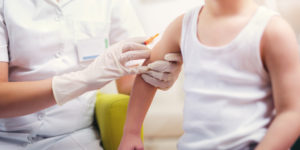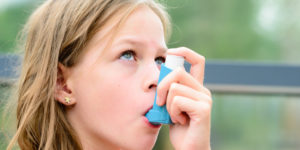
Children can be susceptible to illness because their immune systems are not fully developed; however there are steps you can take to make sure your child stays fit and healthy and reduce the risks of them catching an illness.
Keeping your child healthy
Diet

A healthy diet can significantly reduce the possibilities of your getting ill; try to encourage them to eat a balanced diet which is rich in fruit and vegetables as this will help them to get all the necessary vitamins, minerals and nutrients.
Try to encourage children to eat a healthy diet from an early age as this will instil good habits which will improve their general health in adolescence and adulthood. Ensure your child has plenty of calcium as this will help to strengthen teeth and bones.
Children should also eat plenty of complex carbohydrates to fill them up and lots of protein to help them grow and develop fully.
Exercise

Try to encourage your child to exercise as much as possible; this can include a huge range of activities, such as swimming, running, dancing and playing football to name just a few.
Playing sports teaches children valuable life lessons such as teamwork and respect for others, as well as keeping them fit and allowing them to meet new friends.
Getting involved in sport also feeds ambition and gives children a sense of achievement which will boost their self-esteem and make them more confident.
Keeping warm

In the winter it is important to make sure your child wraps up warm if they are going outside; they may need to wear several layers of clothing as well as hats, scarves and gloves.
Try to encourage them to have a run around outside in the winter but make sure they are not outside for long periods of time. If it is raining, try to keep them indoors.
Make sure your home is warm; experts recommend that each room should be least 21 degrees during the day in the winter.
Hygiene and safety

Make sure your child washes regularly as this will help to prevent them picking up infections.
Keep your home as clean as possible and wash clothes, bedding and towels frequently.
Make sure all passageways and stairways are clear as this will help to prevent accidents; it may also be a good idea to block off stairs with stair gates and cover sharp corners if you have small children.
Common illnesses
Children are susceptible to many illnesses; the most common of these are outlined below:
Coughs, colds and flu

Coughs, colds and flu are extremely common in children, especially during the winter months.
These are all viral infections and therefore cannot be cured by medication; however, over the counter pain relief will usually ease most of the symptoms related to the infection.
Symptoms of these illnesses commonly include a sore throat, sore ears, head and muscle aches, a high temperature, a runny nose, lethargy and a loss of appetite.
If your child is suffering from a cold or cough make sure they drink plenty of fluids and have lots of rest.
Meningitis

Meningitis can be a very serious illness and should be treated as quickly as possible.
Many of the symptoms of meningitis are similar to those associated with the common cold and flu; however there are some others to look out for.
Children who are suffering with meningitis often lose tension in the muscles, causing them to become floppy and many develop a rash; if your child has a rash you should place a glass on the area of ski and see if the colour of the rash fades; if it doesn’t you should seek emergency medical help.
Meningitis often causes children to have a very high temperature which cannot be controlled by medication; take care to check your child’s temperature regularly and if it is high (above 38 degrees) seek medical help.
Meningitis can have long-lasting effects and can be potentially fatal so if your child has any of the symptoms listed above it would be advisable to get them checked out as quickly as possible; do not hesitate to ring 999 if you think your child may have meningitis.
Asthma

Asthma is common in young children and the number of cases has been steadily increasing in recent years.
Asthma commonly causes difficulties with breathing brought about by pains in the chest.
Symptoms of asthma include breathing difficulties, prolonged coughing and wheezing. If you think your child may have asthma you should arrange for them to see a doctor; they will be able to assess your child’s condition and prescribe the necessary treatment.
Children who have mild asthma may only need to use an inhaler occasionally; most children grow out of asthma and do not have to rely on inhalers in adulthood.
Severe asthmatics should carry their inhaler with them at all times as asthma attacks can come on suddenly and can be very dangerous.
If your child is reliant upon an inhaler you should informs their teachers or carers of their condition and how to administer their medication.
Chickenpox

Chickenpox is very common in young children and is spread rapidly due to its highly contagious nature. Chickenpox is easy to identity as it appears as small red spots all over the body.
The illness has an incubation period of about 10 days so your child may be clingy and emotional and may have a high temperature before the spots come out.
If your child has chickenpox try to keep them isolated and avoid busy areas; this will help to prevent the spread of infection to others.
You should wait until the spots have scabbed over before letting them return to school or nursery; this usually takes about 1 week.
Try to discourage your child from scratching the spots because this can slow the healing process and cause permanent scarring; there are lotions available to ease itchiness and swelling.
